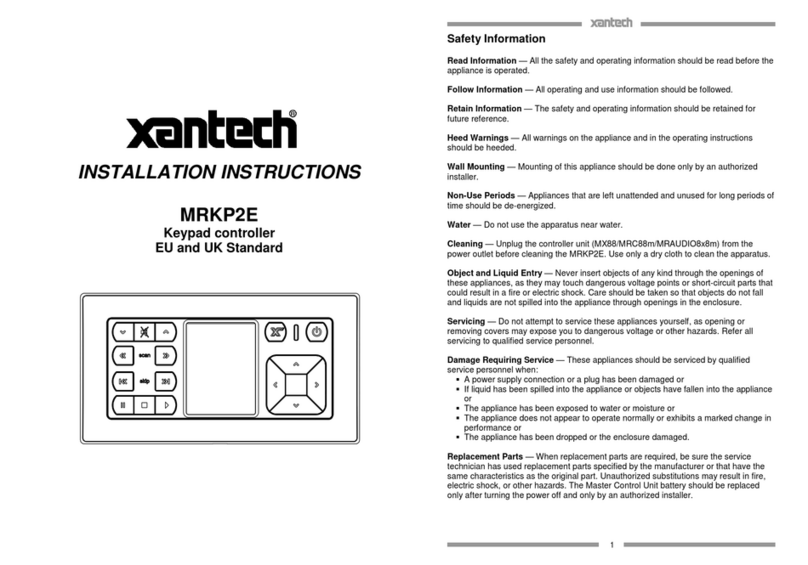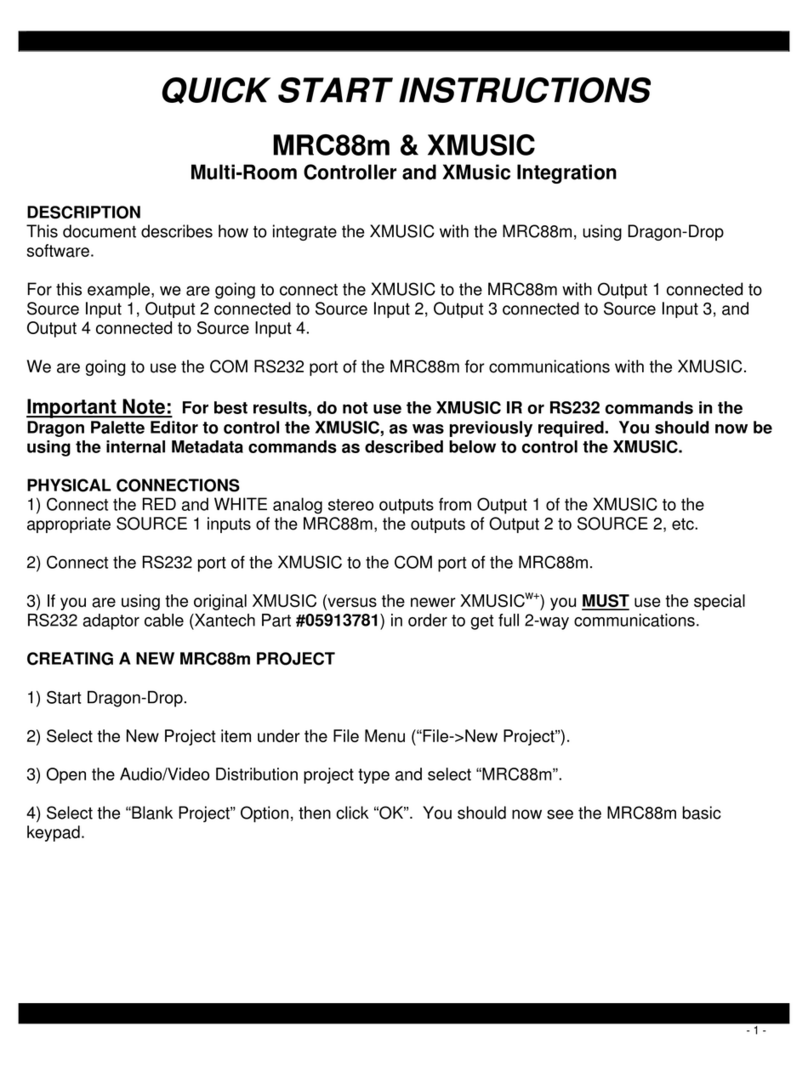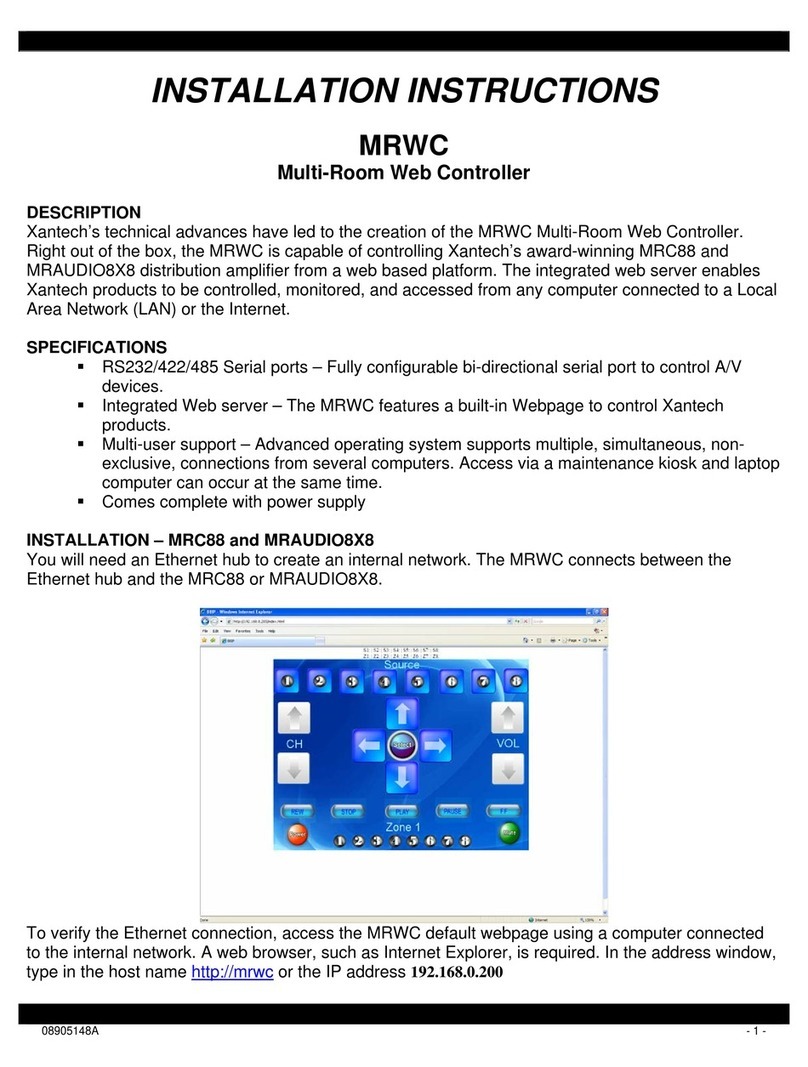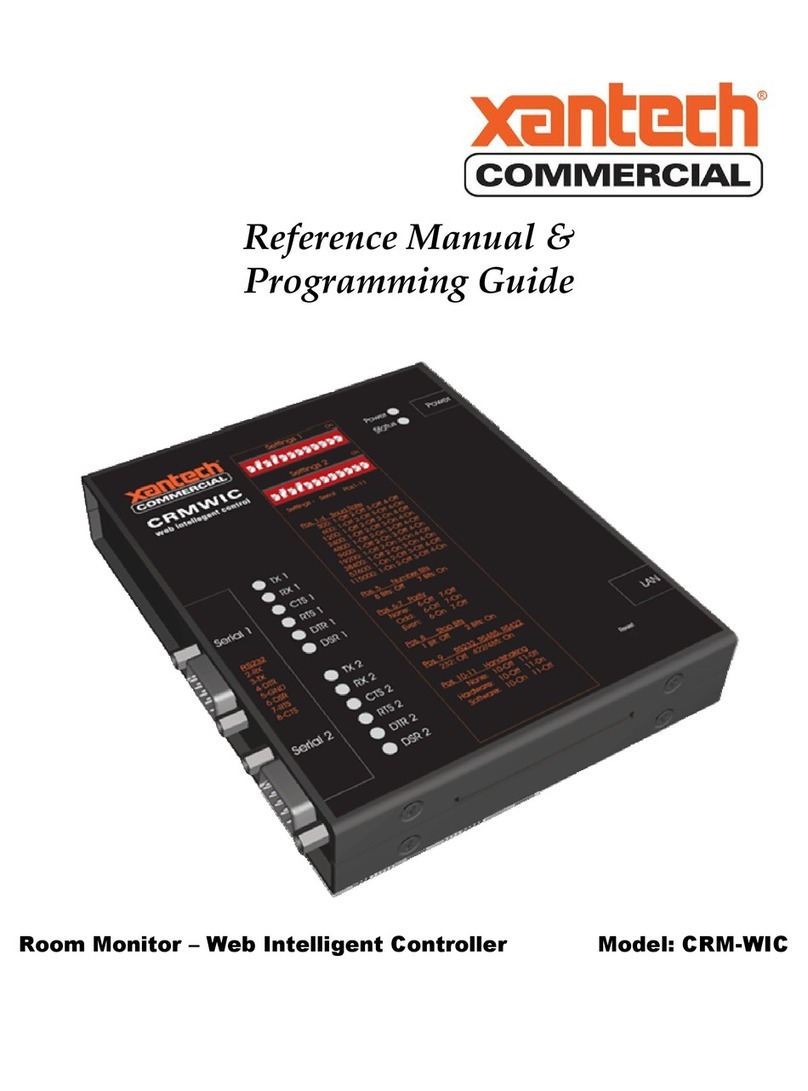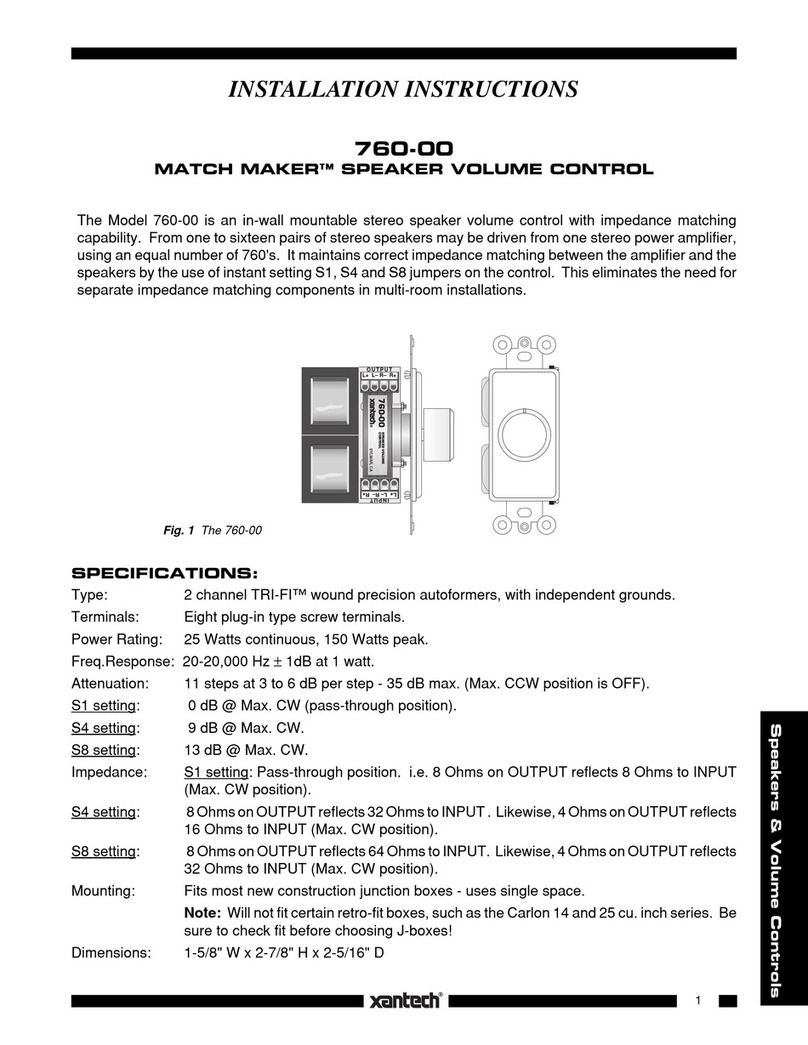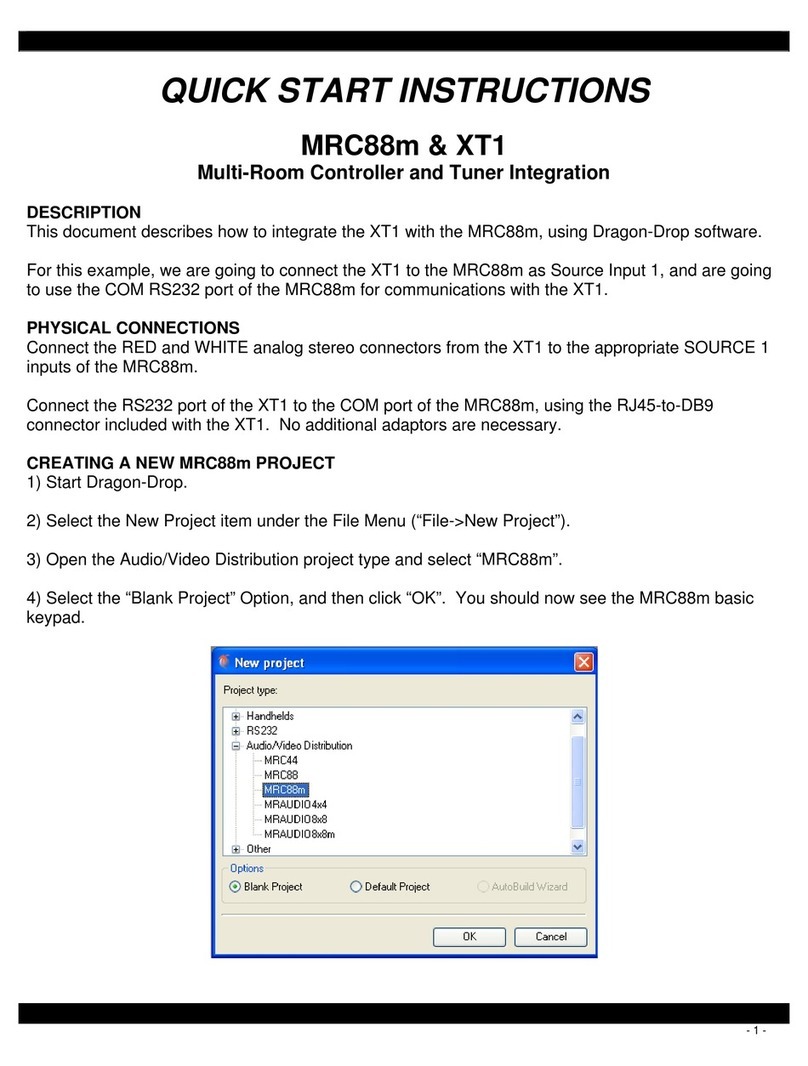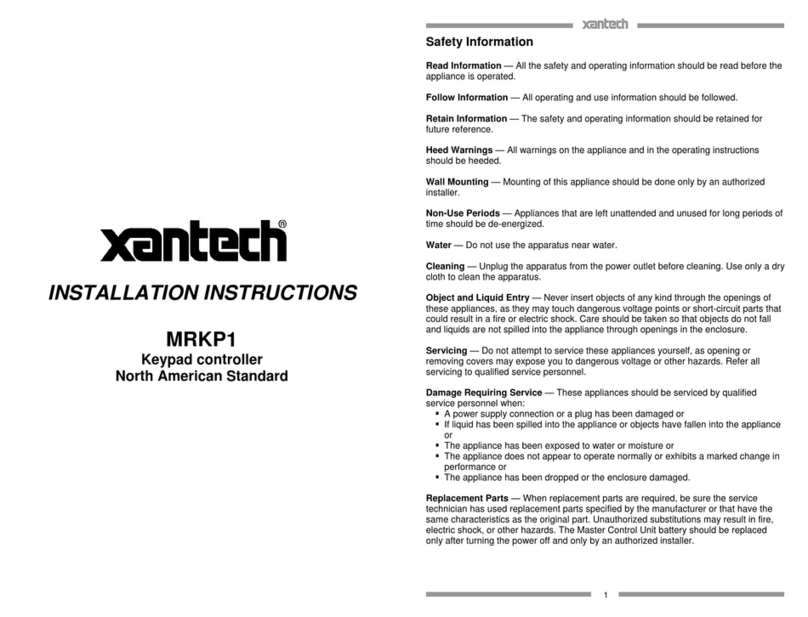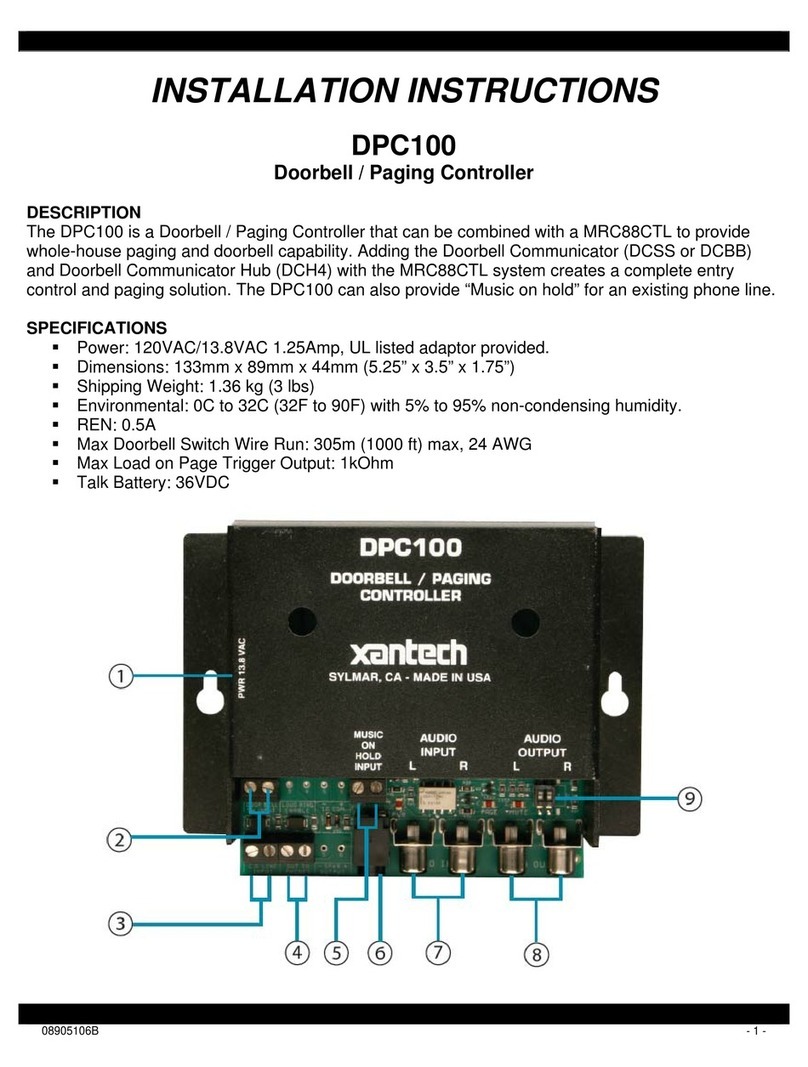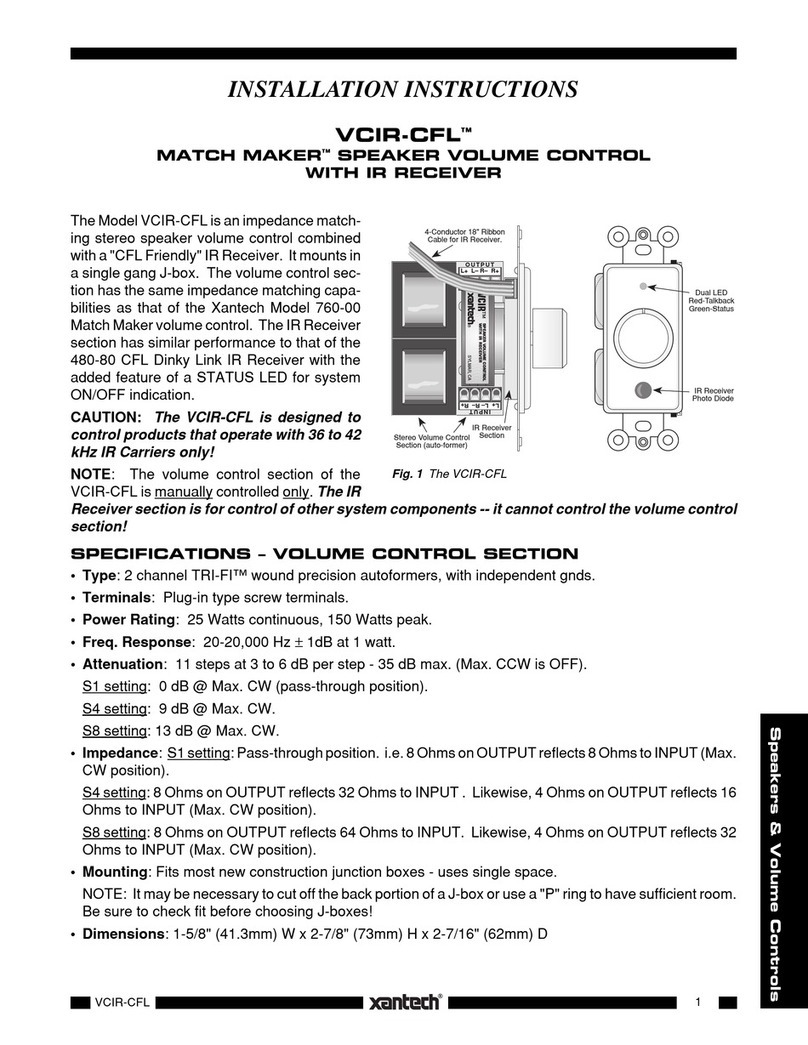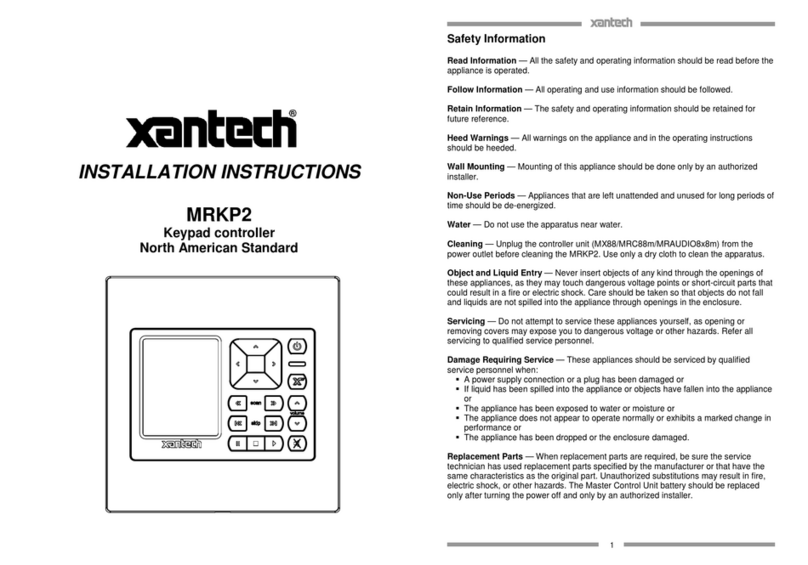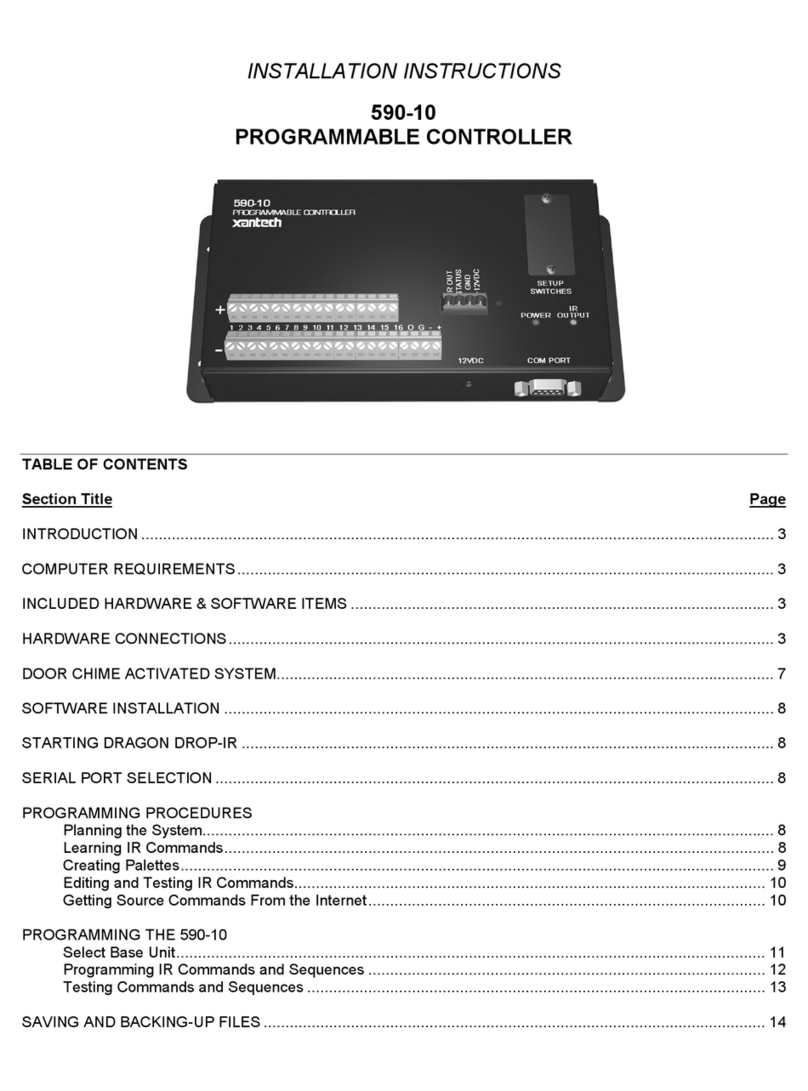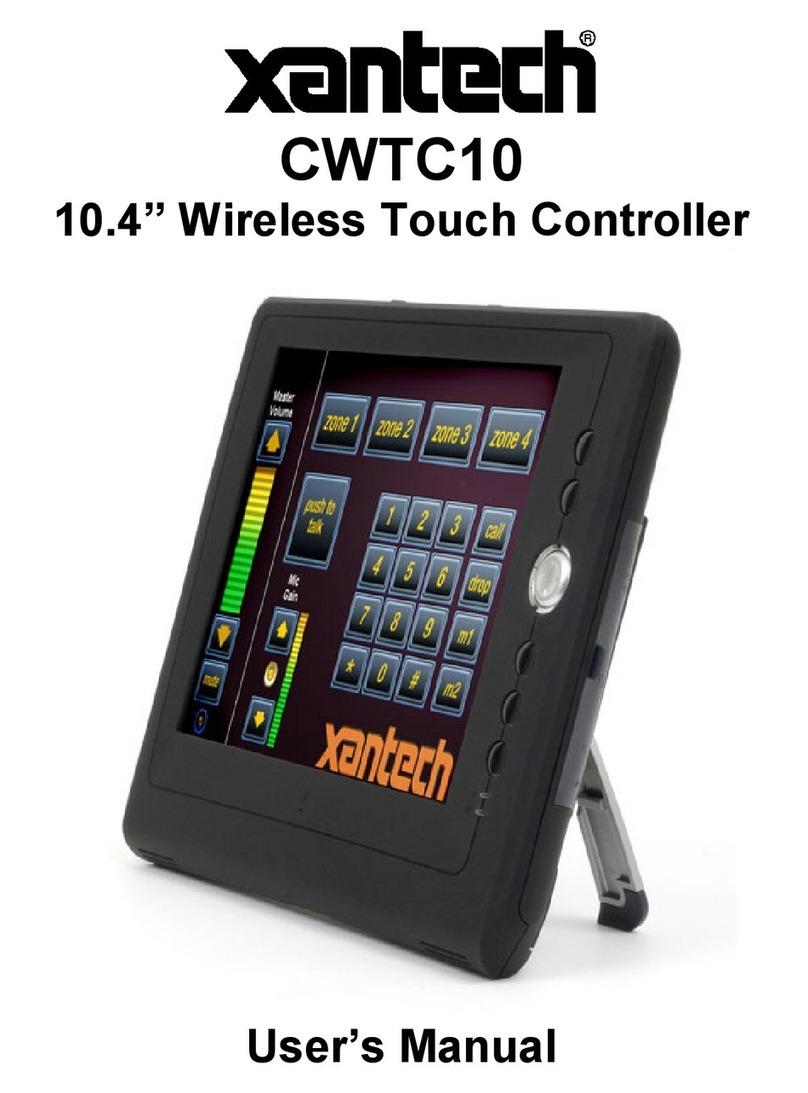
3
Speakers & Volume Controls
MIRV1
4. MUTE ON/OFF. Separate ON / OFF buttons mute and release the signal on the RAT1 without
knowing what the status is. This is very helpful in a remote room when all adjustments are made “blind”
without any visual aid for status.
NOTE: Mute is released (turned off) when a VOLUME or Preset Level button is pressed, in addition
to MUTE OFF.
5. Code Group Numbers. If more than one MIRV1, RAT1, or RGC11 is used in a common IR bus
controlled system, or is included with other Xantech products that respond to RC68+ commands,
different code groups can be assigned, by the installer, to avoid mutual interaction. Refer to the RC68+
instructions for code group setting procedures.
NOTE:
When shipped from the factory, the MIRV1 & the RAT1 are set to code group number
30. Be sure to set the RC68+ to the same number!
INSTALLATION
Using One MIRV1 to Control One RAT1
Fig. 3 illustrates such a system. It is configured as
follows:
1. Connections are made as shown. In this
basic system, the RAT1 volume action is
controlled exclusively by manual rotation of
the MIRV1. No IR control is used.
NOTE: When making the 3-conductor bus
connections, be sure to carefully match up
the terminals according to their markings as
follows: IR IN, GND and +12V.
2. In this system, the MIRV1 sends out control
codes to the RAT1 (via the 3-conductor bus)
to execute volume adjustments. As you
rotate the knob, the LED Status Indicator will
blink until the knob and the RAT1 come to
rest at the desired volume setting.
NOTE: In this basic application, the STA-
TUS terminal on the MIRV1 is not connected.
The LED Status indicator in the MIRV1 knob,
therefore, will remain OFF except when it
blinks during knob rotation.
3. Since,inthiscase,asingleRAT1isusedwith
one MIRV1, each can operate with the same
IR Code Group number as received from the
factory.
4. A 786 Power Supply is shown powering the system. If additional MIRV1s, IR Receivers, Keypads,
etc. are used, then the 782-00 Power Supply is recommended. See the RAT1 installation instructions
for additional power supply recommendations.
5. Since only one pair of speakers and one RAT1 are used, the impedance jumpers on the RAT1 are set
to S1.
Using Two MIRV1's to Control One RAT1
The sytem shown in Fig.4 is similar to Fig.3, except a second MIRV1 contarols the same RAT1 from a
different location in a large room installation. An additional pair of speakers is used to acoustically cover
the large area.
Fig. 3 A Basic MIRV1 Remote Room Volume Control System
+12VDC
GROUND
STATUS
IR IN
SYLMAR, CA
MIRV1
MOTORIZED VOLUME
CONTROLLER
S8
S4
S2
S1
L+ L–R–R+L+ L–R–R+
AMPLIFIER
INPUT SPEAKER
OUTPUT
STATUS POWER
IR IN
STATUS
GND
+12VDC
12VDC
R
L
+–+–
MIRV1
Volume
Controller
FROM AMPLIFIER
SPEAKER TERMINALS
786-00
Power Supply
To 120 VAC
(unswitched)
XANTECH
S-62/64/66
Wall Speakers
3-Conductor Bus
REMOTE ROOM
RAT1
REMOTE AUTO TRANSFORMER
SYLMAR, CA
®
